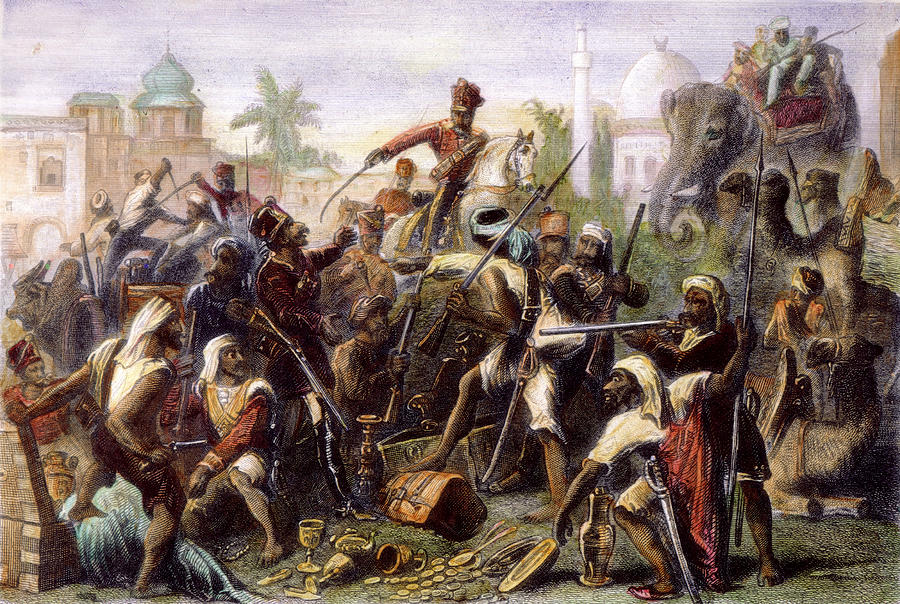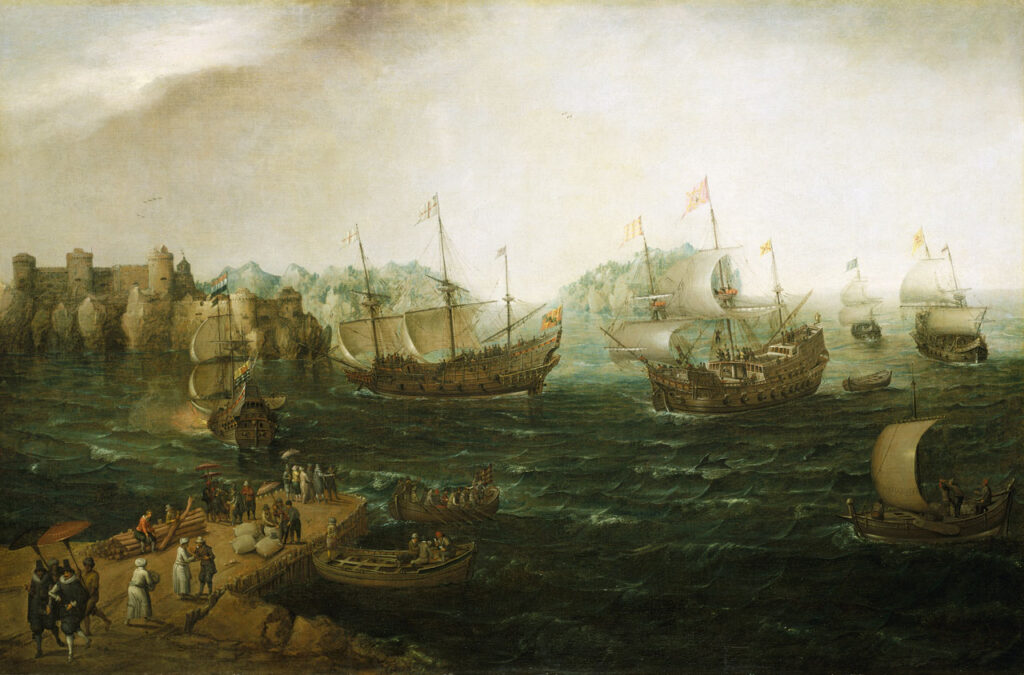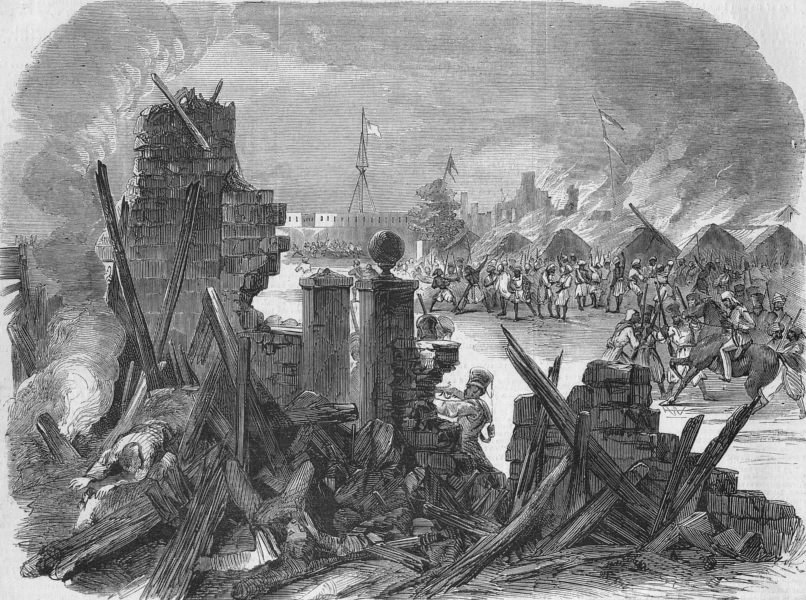Every conquered nation will eventually grow tired and dissatisfied with its conqueror. In 1857, India reached its boiling point.
It decided to wage a mutiny against the Crown, specifically the British East India Company (EIC). The rebellion ended in a little over a year.
Let’s take a look at that important time in Indian and British history.

What’s in a Name?
The Sepoy Mutiny is known by many names: Indian Mutiny, Sepoy Rebellion, the First Indian War of Independence, and The Uprising. These terms have been contested many times over.
Historians agree that it cannot be referred to as a war for independence as there wasn’t a unified national advocacy for freedom at the time. On the other hand, the event can’t be oversimplified as a mutiny as there were multiple mutinies during that year of conflict.
Whatever the name, the fact remains the same: the Indians were unhappy with the British EIC.
The British East India Company
The British EIC was once the most dominant corporation in history. It was a corporation doing international trading. It became so huge that it needed protection, hence, the company also became an army.
The company was founded via a royal charter on December 31, 1600.
It had trade deals with China, India, Indonesia, and Persia for over two centuries. London investors reaped the rewards of the trade, earning as much as 30% for products such as spices, teas, and textiles.
As it dominated international trade, it needed a private army. It amassed troops of more than 260,000 soldiers at one point. The number was twice the size of the British army.
Eventually, there were more Indian men than English men in the British EIC private army. It was an understandable development since the army was basically stationed in India which was under British rule.

What Went Wrong
Since the army was established in 1765, only British soldiers could become officers. However, the majority of enlisted men were locals.
They were called peons or sepoys. During the 19th century, there were seven Indian soldiers to every British soldier—45,000 British soldiers and 230,000 sepoys.
The private army had difficulty recruiting British men or members of the British army who were willing to defect.
Pay Inequality
As if it wasn’t bad enough that sepoys could not be officers, their pay was also much smaller than their white counterparts. Many endured the pay disparity because a brown soldier’s pay was still better than other regular jobs in India.
Religious Disrespect
But it wasn’t just the pay disparity. Locals also suspected that the British weren’t respectful of their religious beliefs. In 1853, a new cartridge for the Enfield rifle used by the EIC was reportedly greased with pig and cow fat.
Hindus generally don’t eat meat, especially cows, since they are considered sacred. The soldiers often had cartridges in their mouths when they loaded them.
A manual had the following instruction: “Bring the cartridge to the mouth, holding it between the forefinger and thumb, with the ball in the hand, and bite off the top, elbow close to the body. Raise the elbow square with the shoulder, with the palm of the hand inclined to the front, and shake the powder into the barrel.”
Rumors circulated that the British were purposely contaminating sepoy flour and salt with pig and cow bones just to mess with them.
High Protection Fees and Taxes
EIC soldiers were also forced to witness their countrymen as they were made to pay high protection fees. Indian princes, for example, lost their states. Meanwhile, many Indians had to pay fees to sustain the activities of the EIC.
Additionally, the general population had to pay high taxes to the Crown. According to a 2018 research published by the Columbia University Press, the United Kingdom drained $45 trillion from India’s coffers.
Cultural Suppression
It is common for colonizers to impose their culture on their subjects. But India has such a long and rich history that it wasn’t easy to dilute and the people weren’t willing to just shelve them in favor of white culture.
The British were actively spreading Christianity and Western culture while belittling Indian traditions.
Treaties Against Indian Businesses
The British EIC was primarily a trading company before it was a private army. Its presence in India threatened local businesses. The EIC also provided unfair competition to Indian manufacturing industries.
Racism
British racism against Indians exists to this day. But imagine how bad it was in the 19th century when it was the norm for white people to look down on people of color and make them feel inferior.
Sepoys had a lot of grievances against their colonizers that eventually led to the mutiny. There had been many minor uprisings before the 1857 mutiny but they were all unsuccessful.
The Sepoy Mutiny was also a failure but it left a lasting impression among Indian leaders and nationalists.
The Tipping Point
On April 8, 1857, EIC soldier Mangal Pandey was executed by the British. For Indians, he was a freedom fighter who incited an uprising among his men and wounded two British officers in the process.
But if you ask the British soldiers, Pandey was under the influence of opium when he attacked and wounded his white counterparts.
One may argue that Pandey’s execution was justified because he injured his fellow soldiers. However, fearing a large-scale revolt, the British punished Pandey’s fellow sepoys in the same company. The punished sepoys were outraged but kept their tempers reined in.
A month later, EIC sepoys in Meerut staged a mutiny after 85 of them were handed a 10-year prison sentence for refusing to use greased Enfield cartridges. They killed their British officers.

According to the World History Encyclopedia, one of them reportedly said: “I was a good sepoy and would have gone anywhere for the service, but I could not forsake my religion.”
The mutiny caught the British by surprise as they were used to the Indians following orders.
Bahadur Shah II: Face of the Revolution
The Mughal Dynasty ruled Northern India from the 16th to 18th centuries. However, its influence slowly declined with time. By 1803, the dynasty only ruled in some parts of Delhi, and with the aid of the British, it eventually lost its foothold in that area.
The last Mughal leader was Bahadur Shah II whom the mutineers appointed as the face and leader of the uprising. The mutineers then captured Delhi and killed Europeans and Indians who were Christian converts.
The upheaval quickly spread. Disgruntled Indians, from businessmen to farmers who encompassed the Hindu and Muslim faiths, joined the sepoys. The princes who lost their states also supported the cause.
In Bengal, 45 out of the 74 sepoy regiments mutinied. The EIC quickly disarmed the sepoy regiments who were loyal to the company and the Crown. In Mumbai, only two regiments mutinied. Some areas that were considered EIC strongholds remained loyal.
The revolt advanced and there was fighting in Assam, Banaras, Gwalior, Jhansi, Kampor, Lucknow, Punjab, and Rajasthan. Some areas were worse than others.
The EIC had to seek the help of the government-paid British Army to control the locals. The British also had the support of Sikh troops and Nepal’s Gurkhas.
Battle Lost
The rebellion failed but the cause remained an important one to Indians. It spurred a national movement that eventually led to India’s independence from the Crown.
After a year of fighting in different parts of India, the rebellion was quashed. The British had superior resources and the revolution was too disorganized.
After all, it wasn’t a planned rebellion.
The sepoys just reached their limits for British exploitation and reacted. There was no coordination between mutineers and nationalist leaders. Plus, there were no set demands for the British.
Different anti-British factions agreed that they wanted the Crown out of India. But the question of who should lead became another cause for contention.
Lord Canning of the EIC announced the end of the rebellion and the restoration of peace in India in June 1858. As they say, the British may have won the battle but the war was not over.
Consequences
Around 800,000 Indians lost their lives during the one-year uprising. Many sepoys and civilians died for their country but many more perished because of the resulting famine.
More than 2,700 British soldiers and officers died from the fight while another 8,000 were lost from heat stroke and other diseases. Around 3,000 were injured.
Shah was exiled but his sons were executed. Many more Indian leaders either died in battle or were sentenced to death after the fall of the rebellion.
One positive result for the Indians was the clipping of EIC’s powers in the country. The British government was not happy with the EIC and noted that it didn’t have the authority to wage a war in the name of the Crown.
The Crown took over the EIC but it wasn’t until 1874 that it was officially dissolved through an Act of Parliament.
Of course, India still wasn’t free. They were no longer under the EIC but a colonizer still ruled the land.
The Impact of the Sepoy Rebellion
Many will not agree that the Sepoy Mutiny was India’s First War of Independence. However, many Indians view it as exactly that.
The mutiny was unsuccessful But it left a burning desire among Indians to be free from British rule, whether it meant freedom from the private company or the British government itself.
India had not been independent since it was first discovered by Portuguese explorer Vasco da Gama in 1498. The Portuguese ruled until the English settled in the country in the 1600s.
Rebellions started as early as the 1750s but it wasn’t as widespread as the Sepoy Mutiny of 1857. More fighting ensued until India finally gained independence in 1947.

